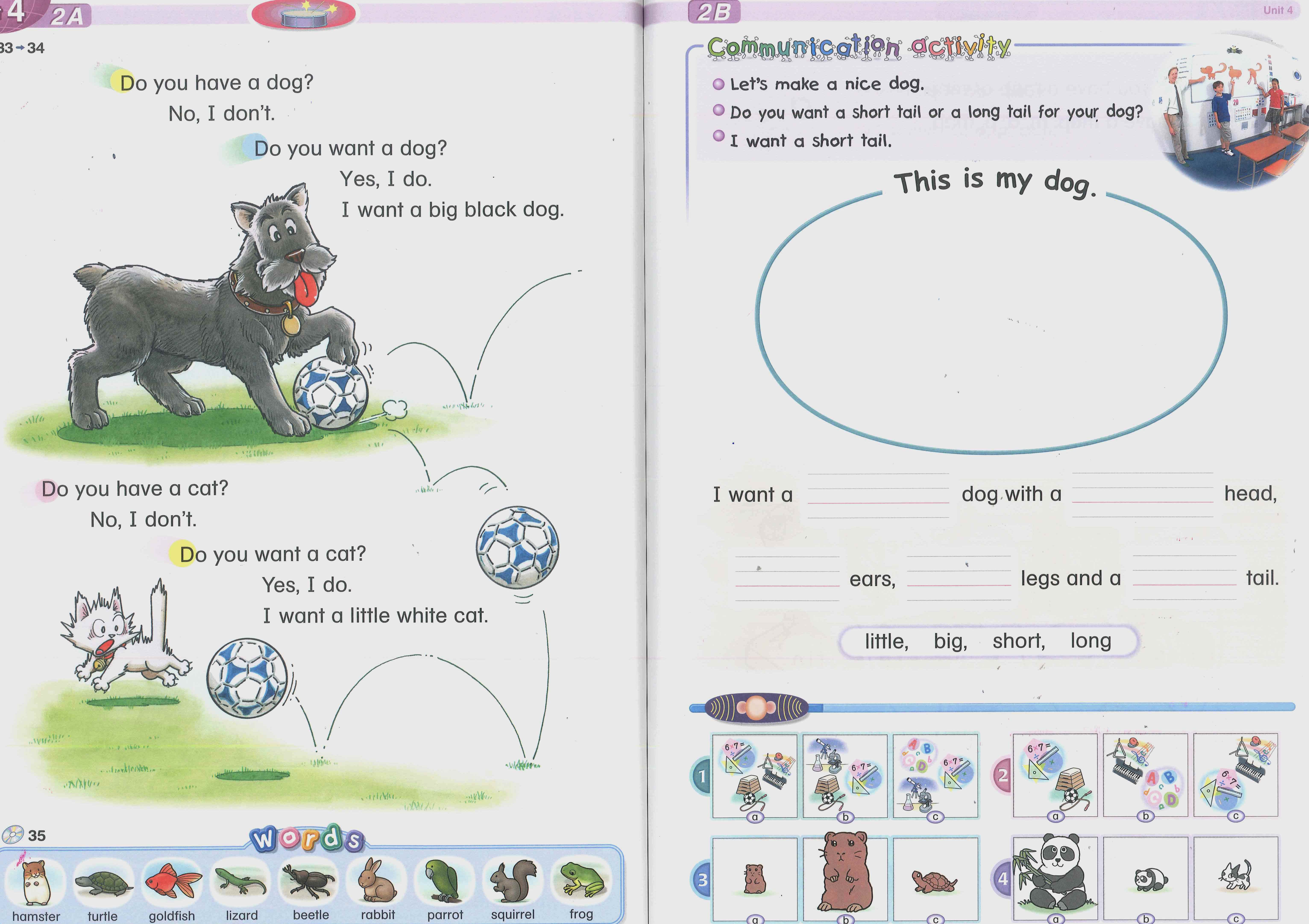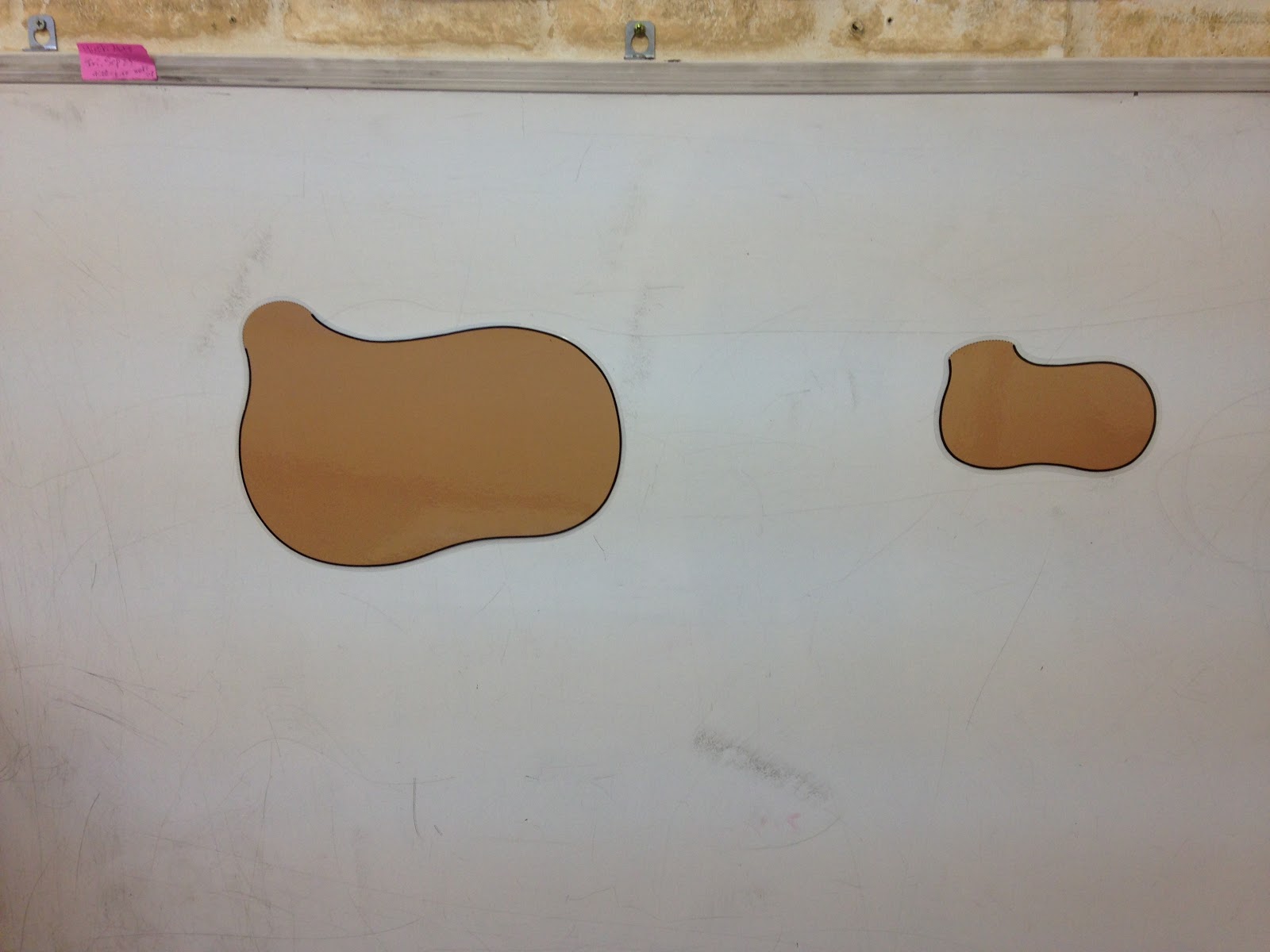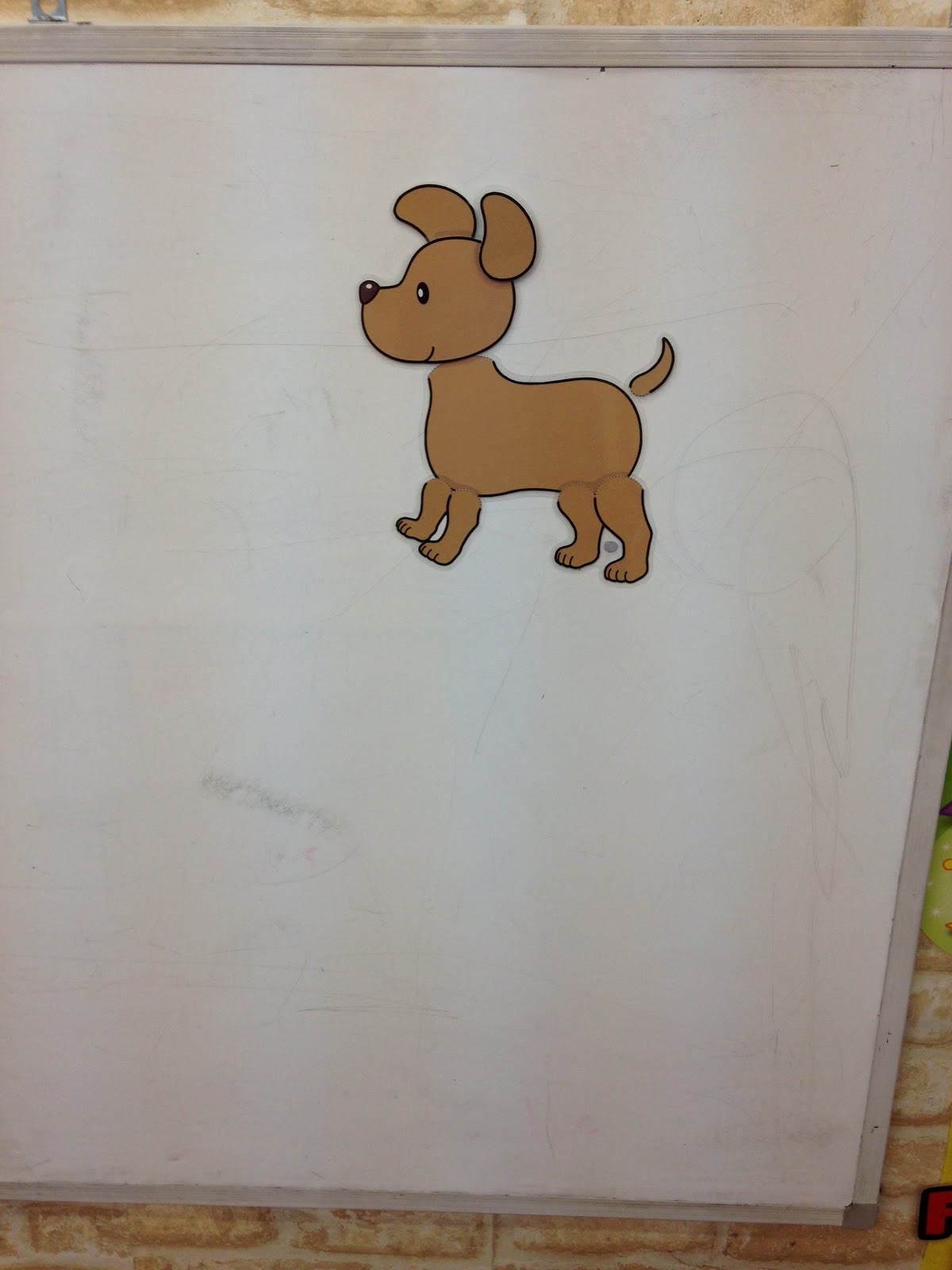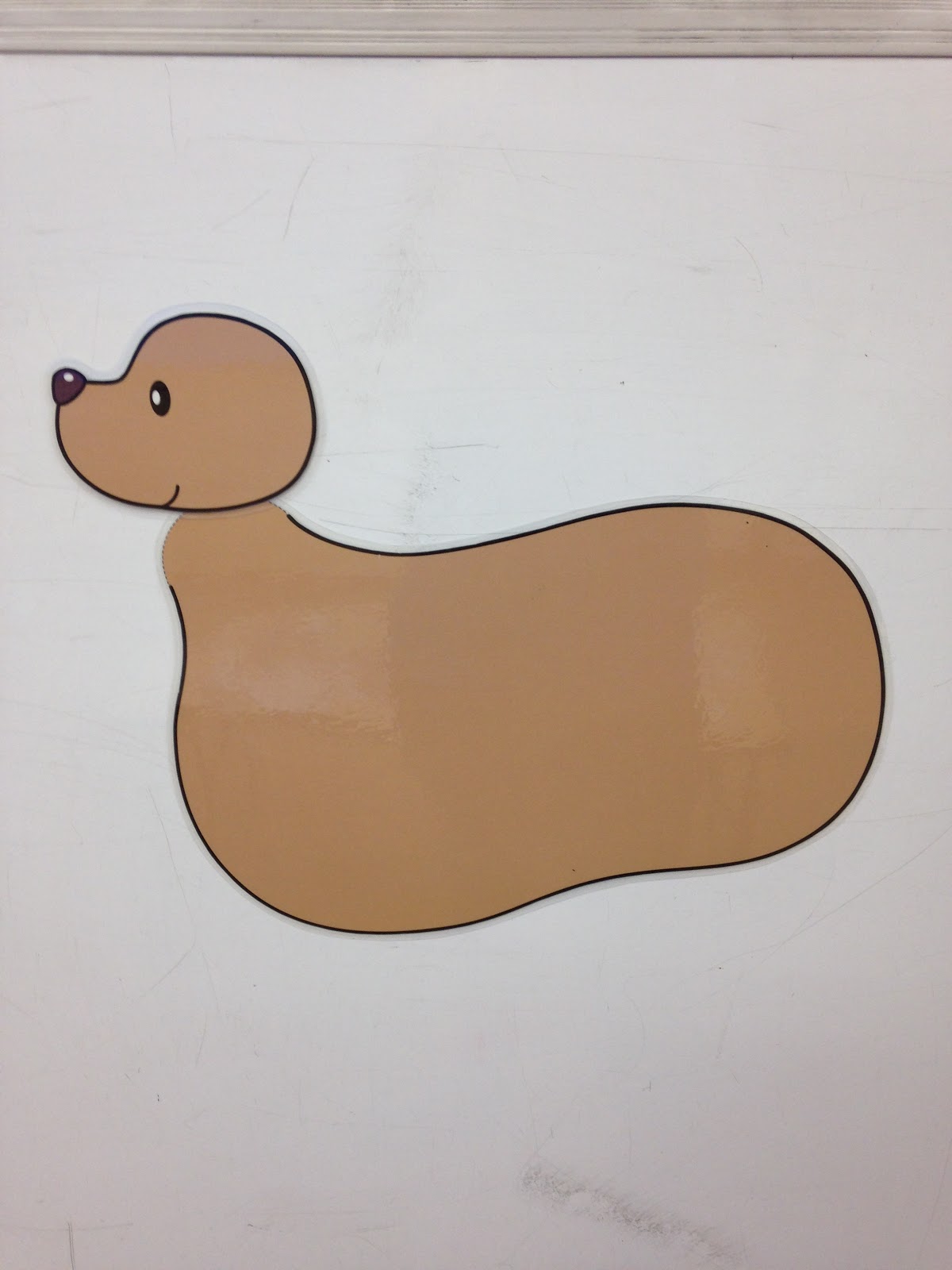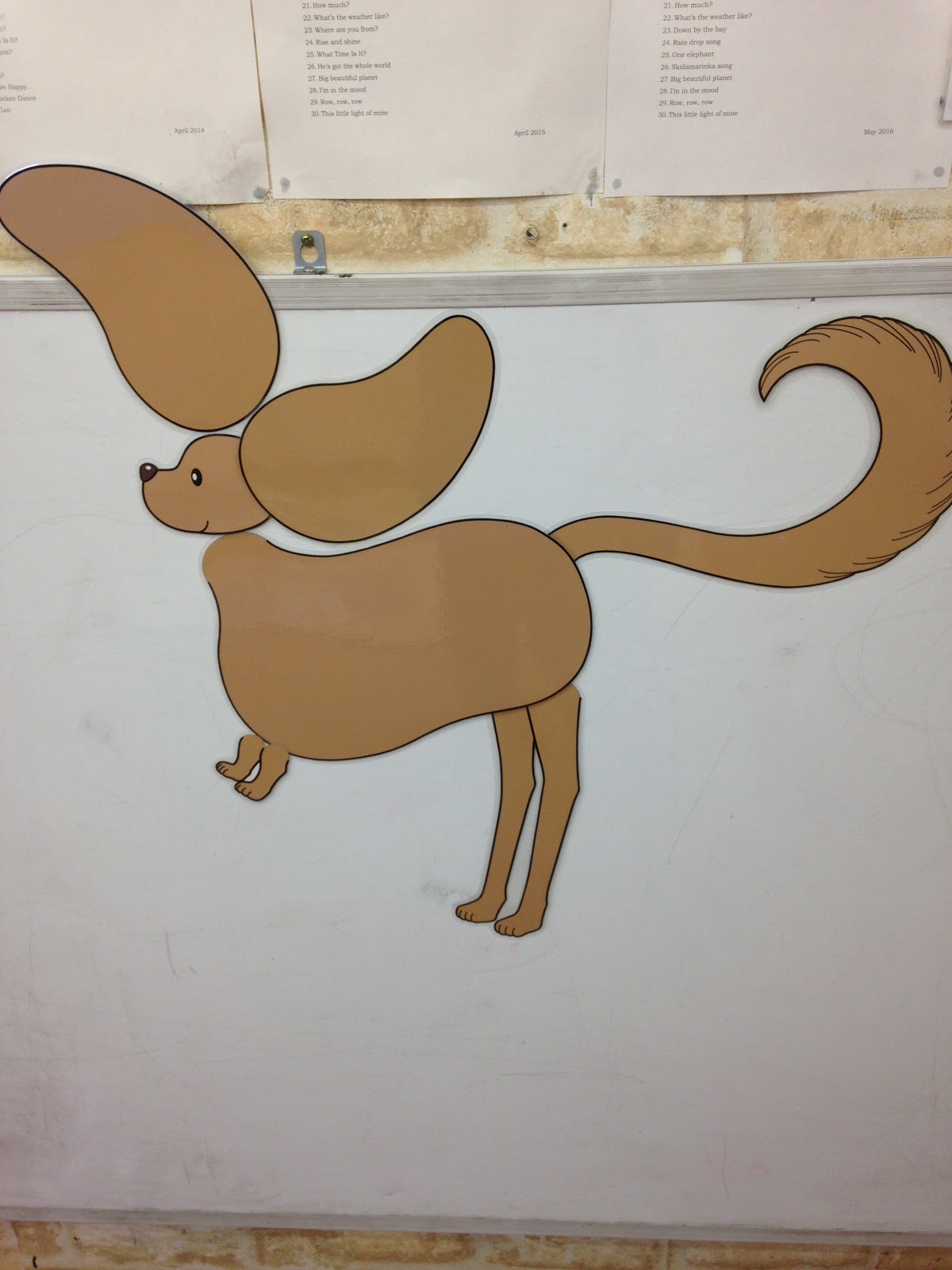

- 54. 10 Useful Pieces of Advice for Teaching with LEARNING WORLD #9 & 10
- 55. “Happy New Year!” “I don’t say that.”
- 53. Halloween 2019
- 52. READY Workbook Pg. 17
- 51. English-Uplift 1-Day Seminars
- 50. READY Workbook - vocabulary copying activity
- 49. 10 Useful Pieces of Advice for Teaching with LEARNING WORLD #8
- 48. 10 Useful Pieces of Advice for Teaching with LEARNING WORLD #7
- 47. 10 Useful Pieces of Advice for Teaching with LEARNING WORLD #6
- 46. 10 Useful Pieces of Advice for Teaching with LEARNING WORLD #5
- 45. 10 Useful Pieces of Advice for Teaching with LEARNING WORLD #4
- 44. 10 Useful Pieces of Advice for Teaching with LEARNING WORLD #3
- Kindergarten aged students
- Lower Elementary-school aged students
- Upper Elementary-school aged students
- Junior High and older students
- Others
25. Pets
Throughout the LEARNING WORLD Series, the topic of Pets returns frequently. APRICOT has a lot of supplementary material that can be used in support, notably “My Pet” from the Picture Book Series, and AJ Picture Dictionary.
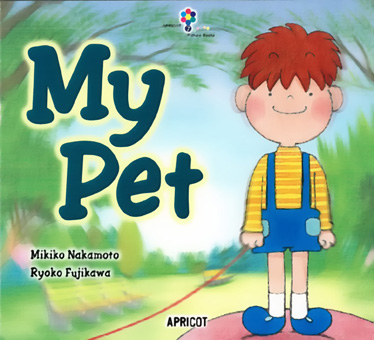
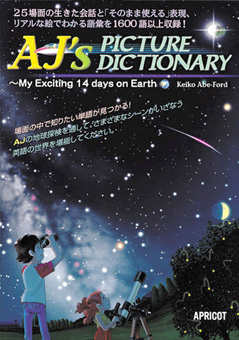
“My Pet” is a fun story about a boy who is thinking about getting a pet, but can’t decide which one as all can potentially be problematic! Adjectives are presented in the form of “too ~”, and an array of pets are eventually dismissed as “too fast”, “too slow”, “too heavy” “too scary” “too tall”.
An excellent workbook is also available with a variety of activities catering to a variety of student levels.
To be sure, not every suitable adjective for pets is represented in “My Pet”, but it provides a good start for students. Now open page 22 of AJ’s Picture Dictionary, and the amazing pets on display can trigger all sorts of adjectives!
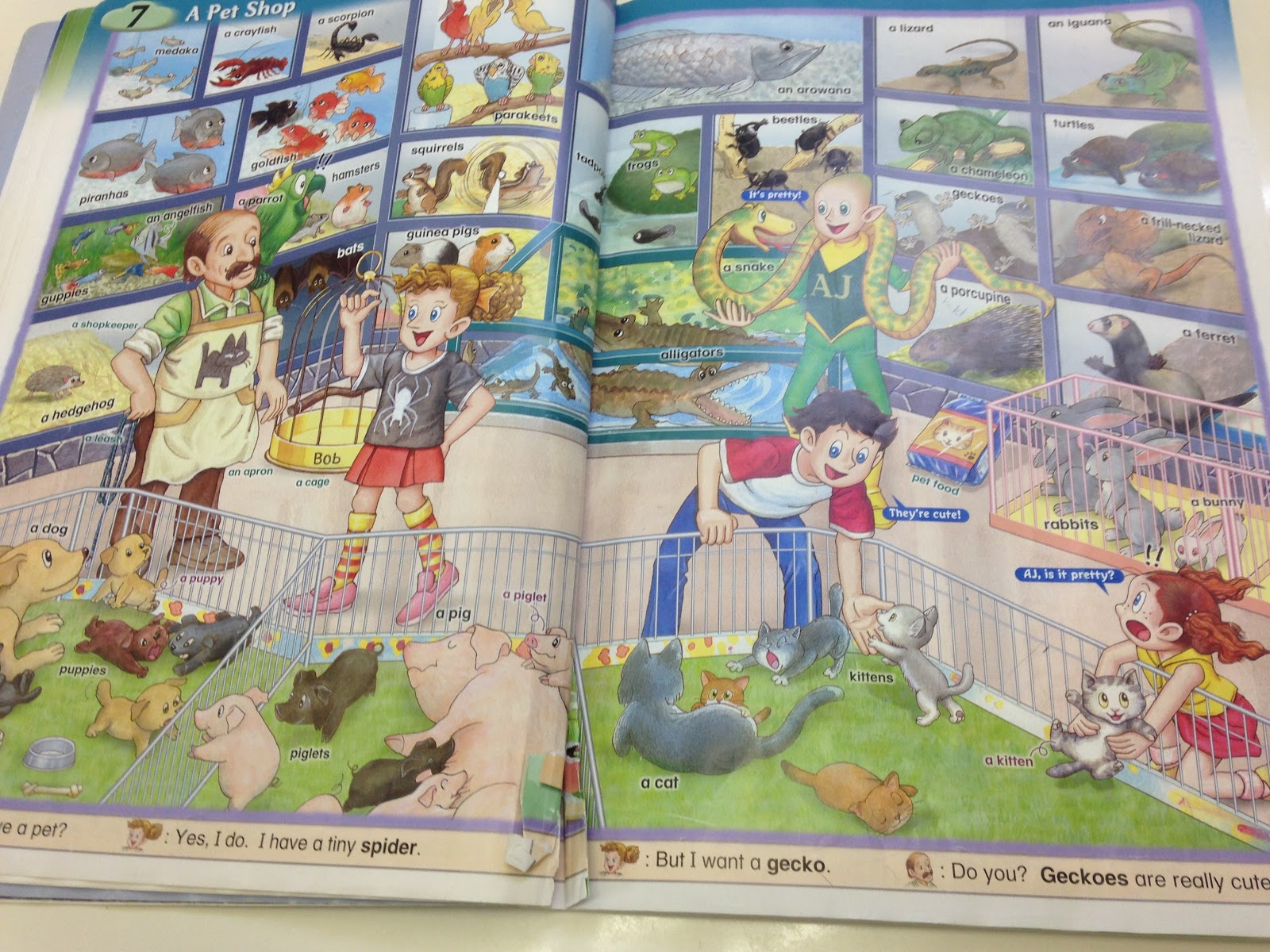
In addition to the adjectives presented in “My Pet”, “big”, “small” “cute”, “beautiful” “funny” and “dangerous” can be applied. We should take care when teaching adjectives though. After all, the function of adjectives is for people to express their own feelings about things. Teachers should avoid pushing personal preferences when teaching adjectives:
“No, dogs aren’t ‘cute’; dogs are ‘scary’. For ‘cute’, you can only use pets like cats and hamsters.”
The week after a class of LW Book1 students had discussed the pets in “My Pet” and “AJ Picture Dictionary”, I prepared strips of paper with “a cute pet”, “a big pet” “a funny pet”, “a dangerous pet” “a beautiful pet” etc. I scattered them on the floor and had the students choose one. With “AJ” open, students could copy the English for the pet that they felt matched their paper. Then they drew the picture in the available space.
With this activity:
・students on the whole had no trouble remembering the adjectives of the previous lesson.
・students by and large were able to read their papers by applying basic phonics rules. Other students helped those students who struggled with the written English.
・at any one time, all the students worked on different papers. For simplicity, it’s tempting to give students all the same paper, and have them work together on them one at a time. The disadvantage of this is that weaker students rely too much on stronger students – to the point where even their choice of pet is not their own.
Once students had completed as many papers as possible, papers were glued onto larger paper for a “collection” of pets. This was then followed by individual presentation.
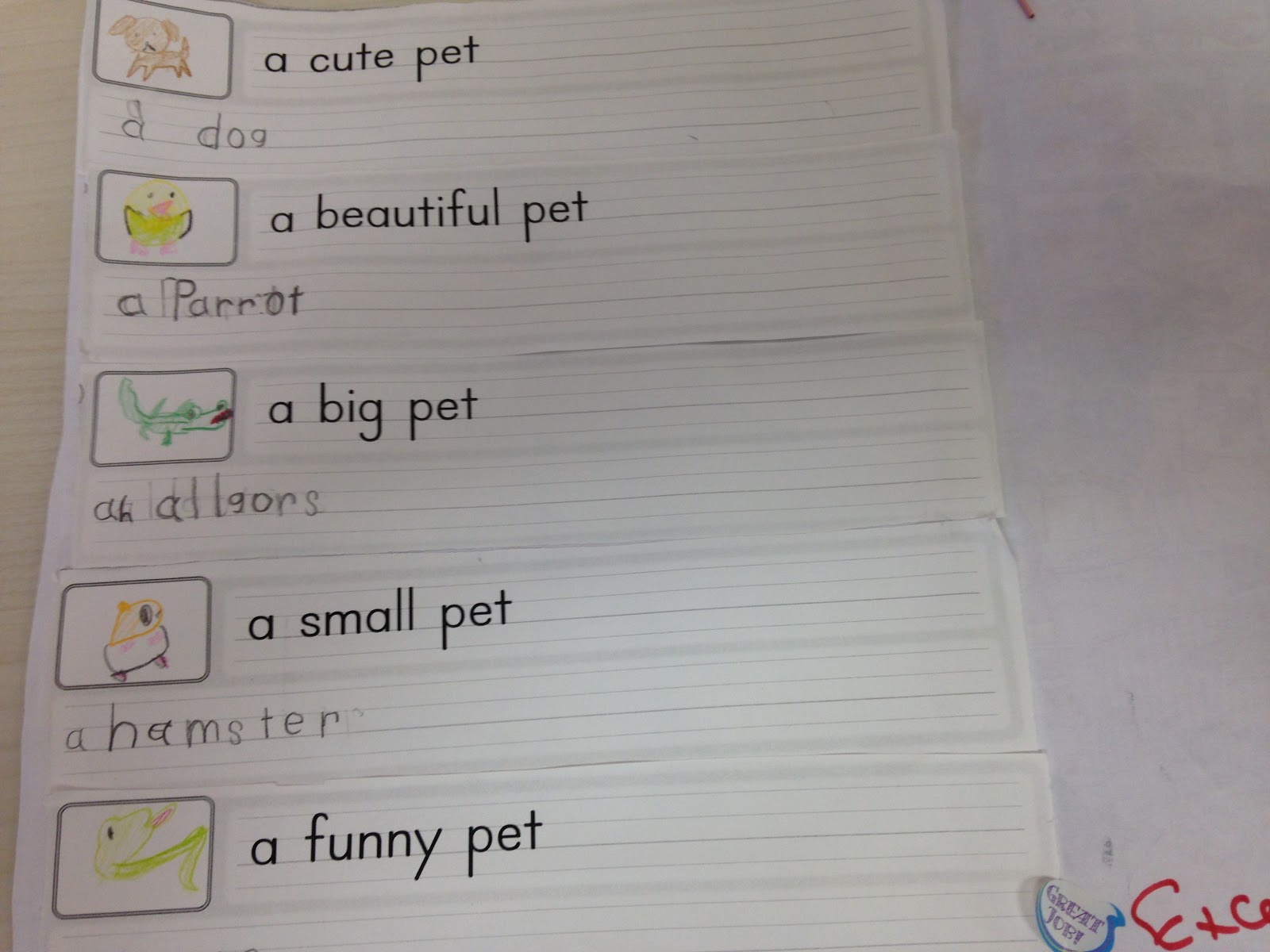
I like the students’ individual choices, their pictures, and the effort they put into copying the English from AJ onto 4-line paper. Their presentations were good too. By all means, take a look!
24.Hello 2017!
HAPPY NEW YEAR, EVERYBODY!
Thank you for reading my blog entries. This year again I hope you can find something useful here for your teaching!
2016 was for me personally a year of opportunity for growth, and this year I’m looking forward to taking on new challenges, particularly in the area of our students’ writing skills. Up to now, my approach to the instruction of writing has been rather haphazard, and I’ve been feeling a need to think about it more deeply. Kawahara-sensei’s presentation at the APRICOT Mates Meetings late last year brought home the urgency of this. The future holds many challenges for our students, not least of which is the importance of being able to be expressive and creative in writing. I’ve been of course aware of this for some time, but priority had always gone to oral communication activities. This year I’m going to take the issue into the classroom seriously.
at APRICOT Mate Meeting in TOKYO ![IMG_2981[1]](https://www.apricot-plaza.co.jp/ap_admin/wp-content/uploads/2017/01/IMG_29811.jpg)
![IMG_2914[1]](https://www.apricot-plaza.co.jp/ap_admin/wp-content/uploads/2017/01/IMG_29141.jpg) Guest: Mr Dario Toda
Guest: Mr Dario Toda
APRICOT will be releasing some exciting new titles this year: “Learning World BRIDGE”, “Learning World TOMORROW (Revised) and “Learning World FUTURE”. I’m sure all of us are looking forward to getting these into the hands of our students! I know APRICOT staff are committed to getting them out by Spring, but I sincerely hope they don’t neglect their need for sleep and good health in their enthusiasm to meet this deadline!!
Less than a month has passed since the last Learning World Workshops, and already APRICOT is thinking about the next series for the Spring. It’s looking likely that again I’ll be presenting something. I’m totally OK with this – if you are all OK too. If you’ve never attended a LW Workshop, definitely come along! I’m sure you’ll find it valuable. If you’ve attended before, come along again! And bring a teacher-friend! It’s always good meeting teachers interested in self-development.
Again, Happy New Year! I hope your winter break was relaxing, and like me you are ready and motivated for your students and the challenges they bring!
Come on, 2017! Bring it on!!
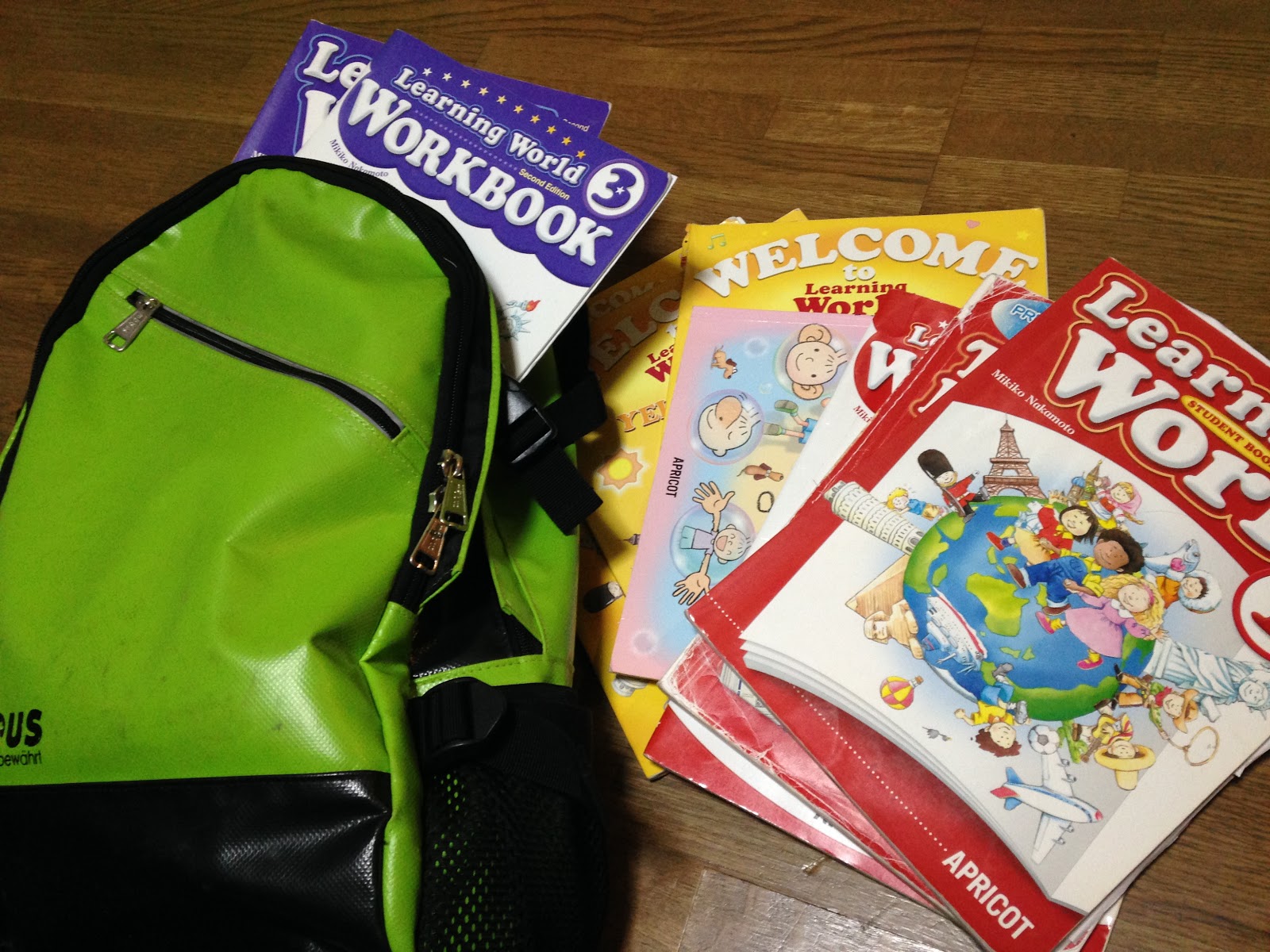
23. LEARNING WORLD Autumn Workshop 2016
Well, the first of three Autumn LEARNING WORLD Workshops happened on Sunday in Osaka. It followed a rather busy Saturday with my family joining more than a thousand other people for a 5km charity run around the Imperial Palace in Tokyo, raising funds for research into a cure for breast cancer.
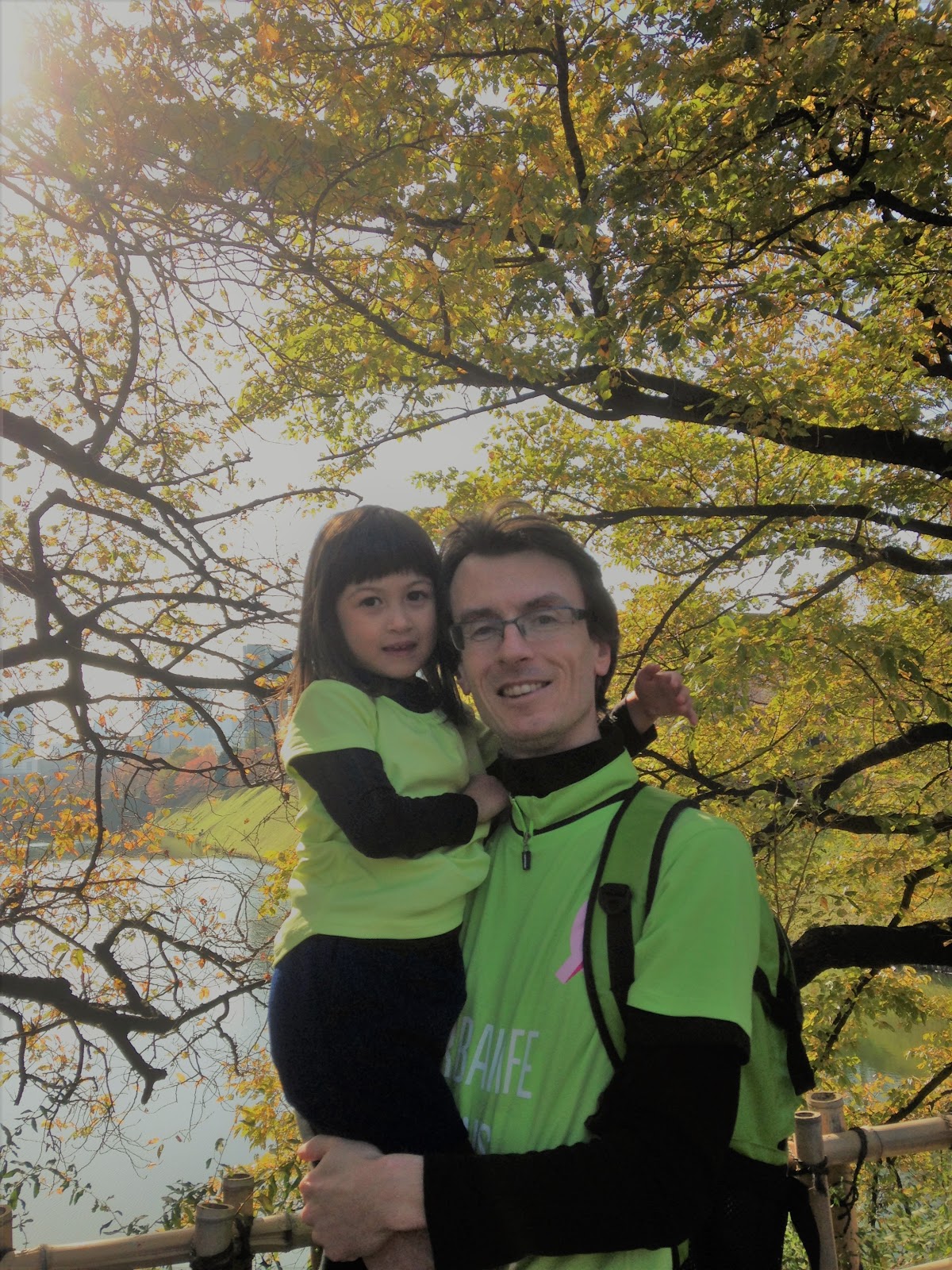
Understandably the kids were tired and a bit grumpy by the time we arrived in Osaka.
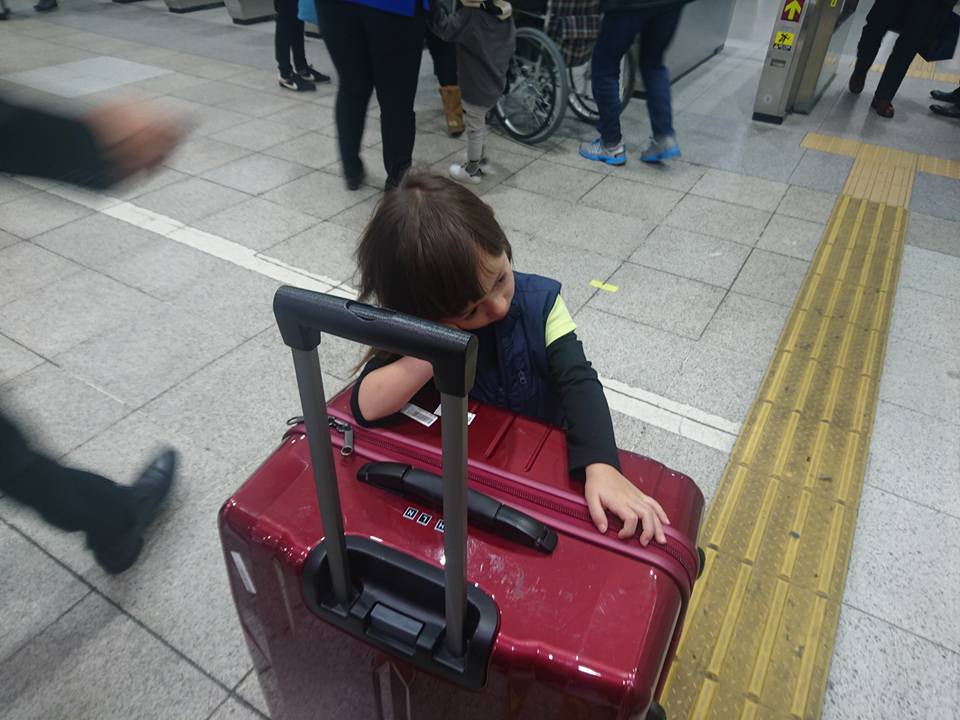
It was great seeing so many familiar faces at the workshop. New faces were there too of course, but there is room for plenty more! Please recommend the LEARNING WORLD Workshop to all teachers you know who are interested in self-development!
It was nice this year to be able to share the floor with Kawahara-sensei and Nakamoto-sensei – both of whom are in my personal Top 4 most influential educators.
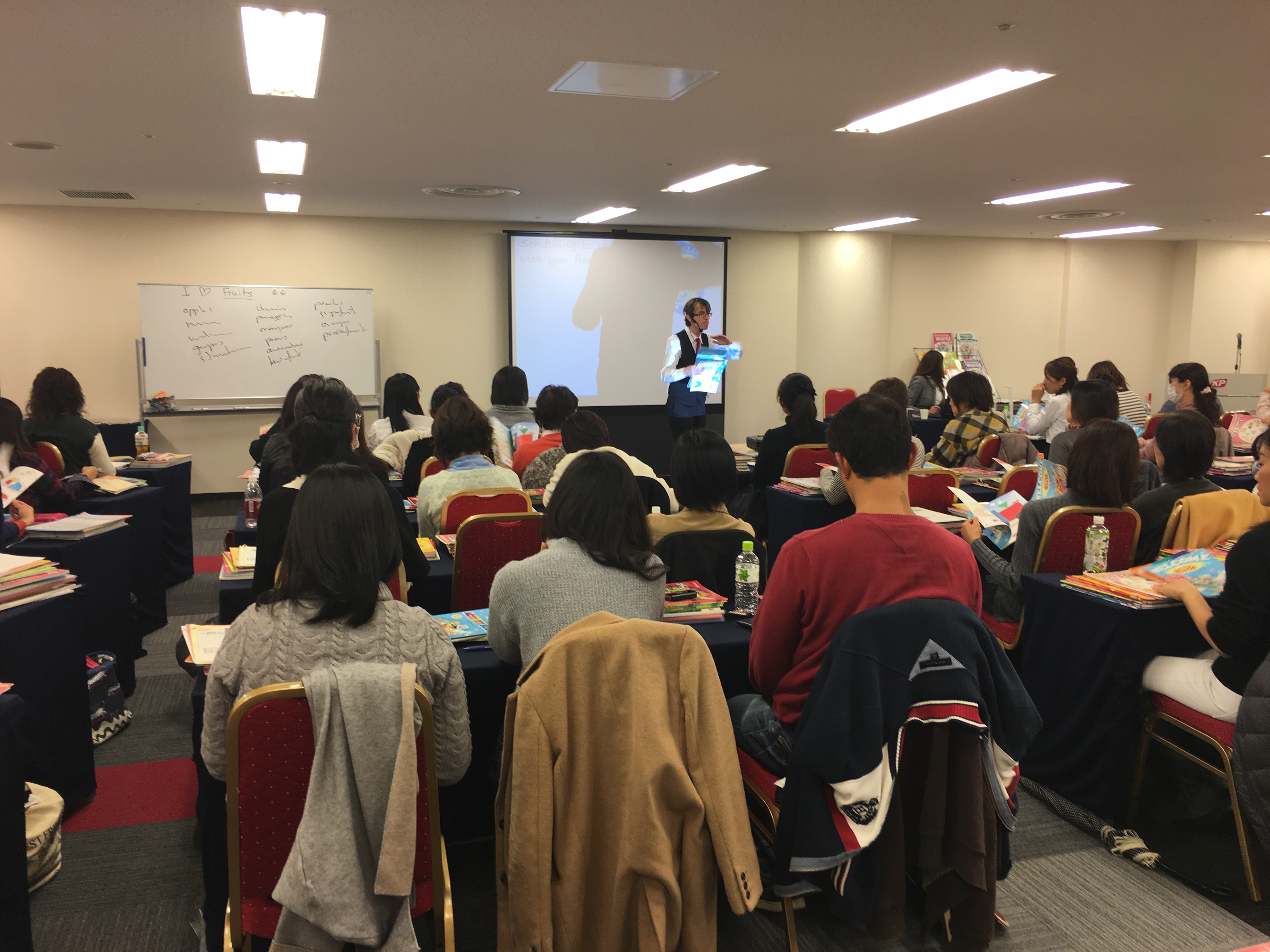
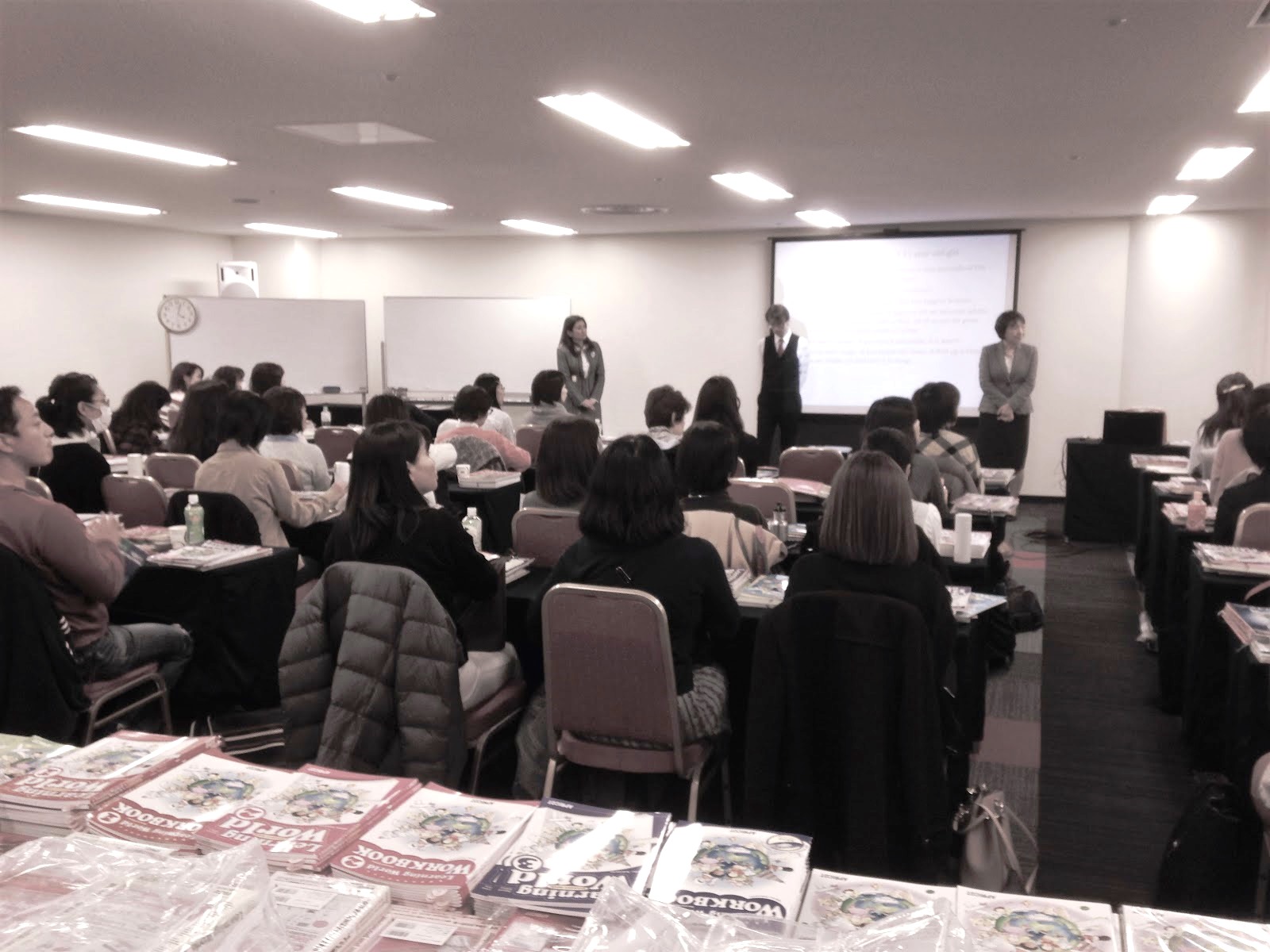
My presentation dealt with the importance of students’ oral presentation, and included ideas from each LW text in order to bring them to that point. I included some video footage from several of my classes. I hope everybody who attended was able to take home something useful!!
Immediately following the Workshop was the Osaka APRICOT Mates Meeting. Here again Kawahara-sensei, Nakamoto-sensei and I each gave a short presentation. Mine dealt with creating situations in the classroom to generate more student output. Again, I sincerely hope that the participants were able to find it valuable!
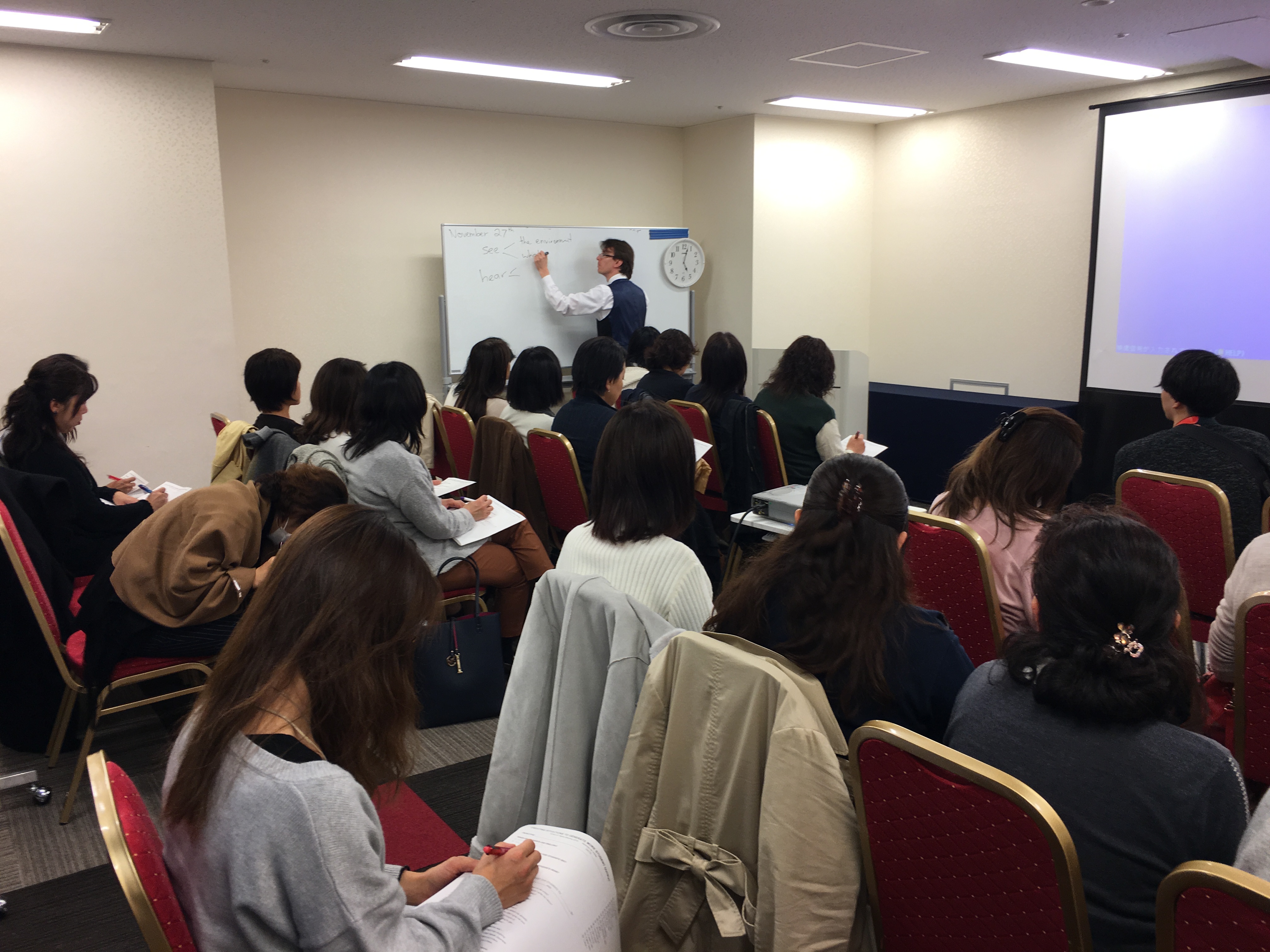
The Tokyo Workshop is coming up this weekend (12/4), and the Nagoya Workshop will be next week (12/11). I believe registration is still open, so if you haven’t done it yet, please do it today!
See you there!
22. APRICOT Picture Book “A Teddy Bear”
I recently presented the APRICOT Picture Book “A Teddy Bear” to a class of 15 kindergarten students.
The final activity was for the students to make their own teddy bear using the photocopiable body parts printed on the last page. To assemble the bear, the students had to ask the teacher(s) for each body part: “Eyes, please”, “A nose, please” etc.
All in all, it’s a simple and fun activity that provides students with a reason to use the English for body-parts.
Yet, whenever I’ve done this activity in the past I have always experienced some difficulty with it. Mainly this: the vocabulary – body, eyes, ears, nose, mouth, arms, legs – is quite a handful for young learners. There is a lot to remember, students sometimes confuse “eyes” with “ears”, and “arms” is for some reason easily forgotten. As a result, whenever students have come to get their bear’s body-parts from me, I’ve needed to remind them what to say: “Eyes, please”, “Ears, please”, “Arms, please” etc. Reminding students what to say in a situation is normal of course, but in this activity it’s frustrating because this is precisely the English I want students to say independently, and once the bear is complete, there really won’t be another opportunity.
So this time, I slipped in a few other activities prior to the bear-making activity for support, and I’m happy to report that the students did much better than previously! The activities are described below, and can easily be spread out over two, three or four lessons depending on lesson length.
ACTIVITY 1: The Picture Book “A Teddy Bear”.
This material serves, among other things, to present the vocabulary of body parts in context.
The vocabulary’s input was supported by students saying each item and showing their location on their own body.
ACTIVITY 2: “A Teddy Bear” WORKBOOK page 3: Color the body parts.
Students colored the body parts as instructed by the teacher(s).
T: “Color the ears!”
Ss: “What color?”
T: “Green!”
In this way, students could indicate their understanding of the vocabulary. Before and after this activity, again students said each item and showed their location on their own body.
ACTIVITY 3: “A Teddy Bear” WORKBOOK page 5.
The students were unable to read the English on the left of the page, so I showed them my coloring – one body part at a time, and one student at a time, and out of sight of the others. This way one student had to relay the information to the rest of the class:
S: “(Color the) eyes!”
Class: “What color?”
S: “Blue!”
Activity 2 gave the students an opportunity to “listen and indicate their understanding”.
Activity 3 gave the students an opportunity to “say” the English.
Before and after each activity, the vocabulary was reinforced with students saying each item and showing the location on their own body.
ACTIVITY 4: Making the bear
Preparing 7 body parts for each student was painstaking (lots of photocopying and cutting-out) but unavoidable.
Each student first received a B4-sized sheet of construction paper. In fact, B4 was a little bit small for the completed bear to fit comfortably. This ensured that students used their imagination to make it fit, and helped each bear’s uniqueness.
Students were then instructed to go to the teacher(s) to collect the body parts, then return to their desk to glue them on.
Importantly, not all the body parts were available for collection immediately!
The first body part made available for collection was the bear’s body. This vocabulary was fixed for step 1 of making the bear to make subsequent steps smoother. All students were able to say “Body, please” easily.
The next body parts made available for collection were the “eyes” and “nose”. Having two body parts available, as opposed to just one, was necessary to encourage genuine communication.
Next were the “ears” and “mouth”. For simplicity, I decided to keep “eyes” and “ears” available for collection at different times, not together.
Then finally “arms” and “legs”.
I was happy with the activity overall because the students generally felt success with the English, they used it communicatively, independently and with hardly any need for reminding. They enjoyed it and the results were very unique to each individual student.
21. “Let’s Make a Dog” – Book 2 ACTIVITY SHEETS (Unit 4-2)
The idea behind this material is for students to cooperate as a class in the creation of a dog using the English “big/small/long/short” and “body/head/ears/legs/tail”. The dog’s body parts are added one at a time. Each part is either very big or very small, so the kids can enjoy the comical aspect of creating a rather disproportionate dog. In fact, the more outrageous-looking the dog becomes, the more liberty students find with their creativity. Short legs on a big body with a small head, small ears but a very long tail…. All rules of “normality” are out the window, and acceptance of the unusual or different is experienced. The more excited the students become, the more enthusiastic they become to produce the necessary English.
I recently tried the activity with two “nen-cho” classes (5 year olds) at a kindergarten. Each class had 25 students. The second class was more successful than the first. The key for success with this activity lies in the start.
In the first class, the first part of the dog I presented to students was the body. I placed both the large body and the small body on the blackboard, and asked students to choose one. They decided on the small body.
Thereafter, the students would only choose small body parts. They had a difficult time accepting the possibility that the dog could have big ears, long legs or a long tail. In their mind, a small body meant a small dog, and so everything had to be small. Even though I tried to encourage them to try long legs or big ears, they adamantly refused. All parts HAD to be small. The result was a very average-looking small dog:
Worse still, students didn’t use much English, and they didn’t particularly seem to enjoy the activity.
For the second class, in order to encourage more creativity and English of course, I presented initially a large body AND a small head.
This way the dog was already “unusual”, and so the students found it easy to be creative. Their imagination soared and the debate on whether the dog should have a short tail or a long tail, or short legs or long legs, was heated. The students thoroughly enjoyed this activity.
This activity generates a good amount of English when students are prepared to accept the “unusual” or “outside the norm”. This is perhaps challenging for kindergarten kids – unless you show them clearly from the outset that it’s OK.
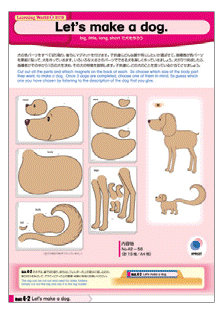












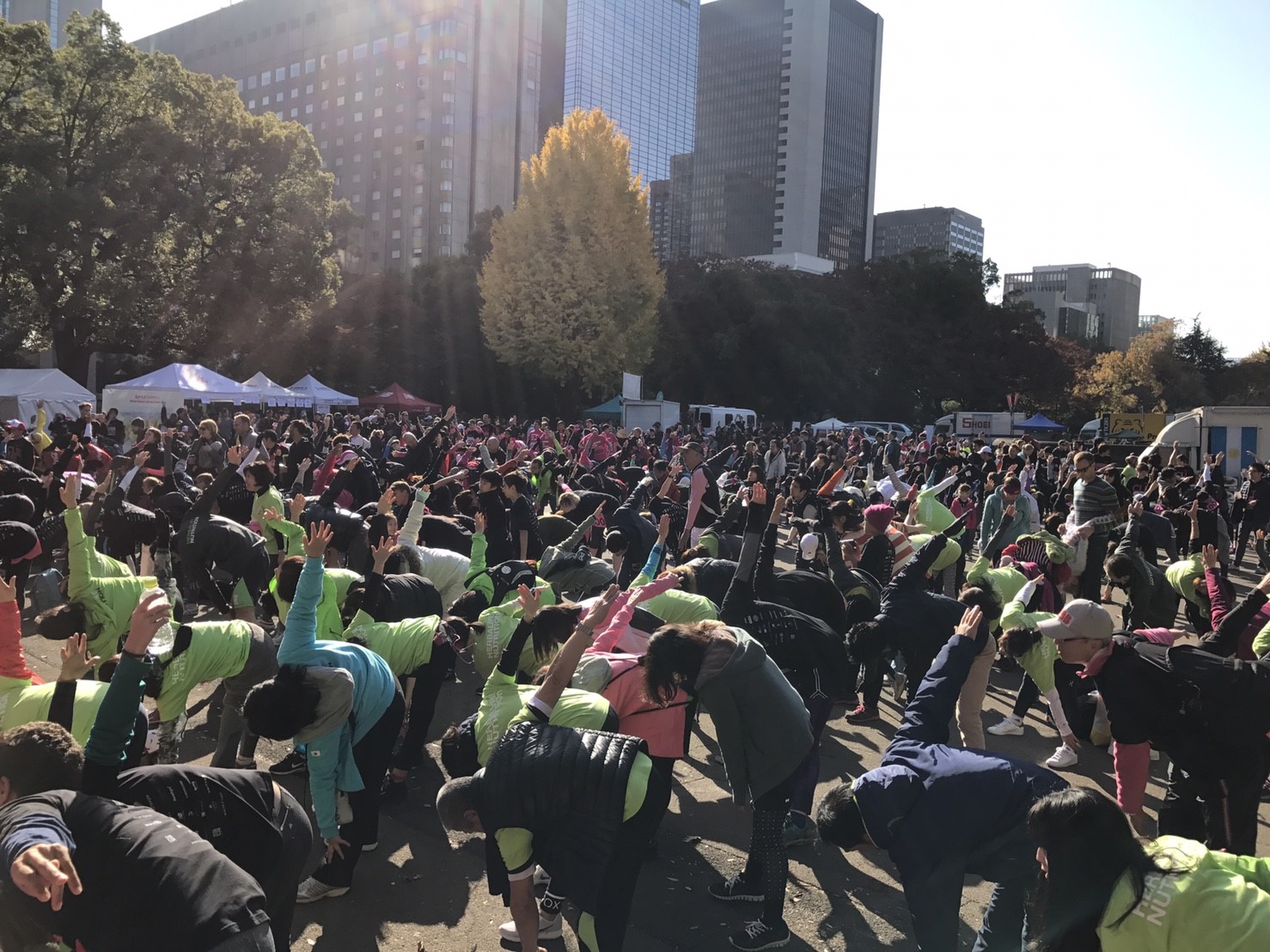
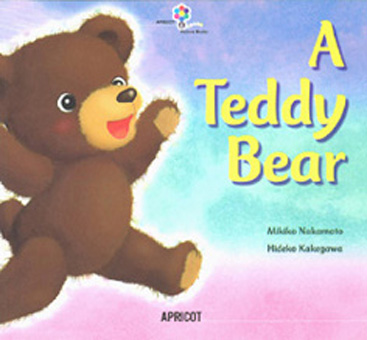
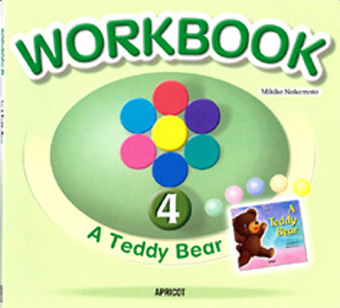
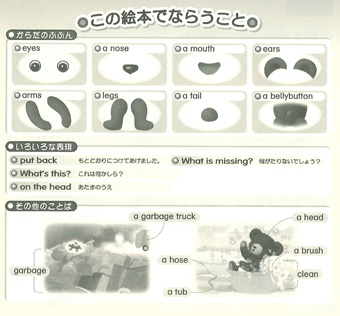

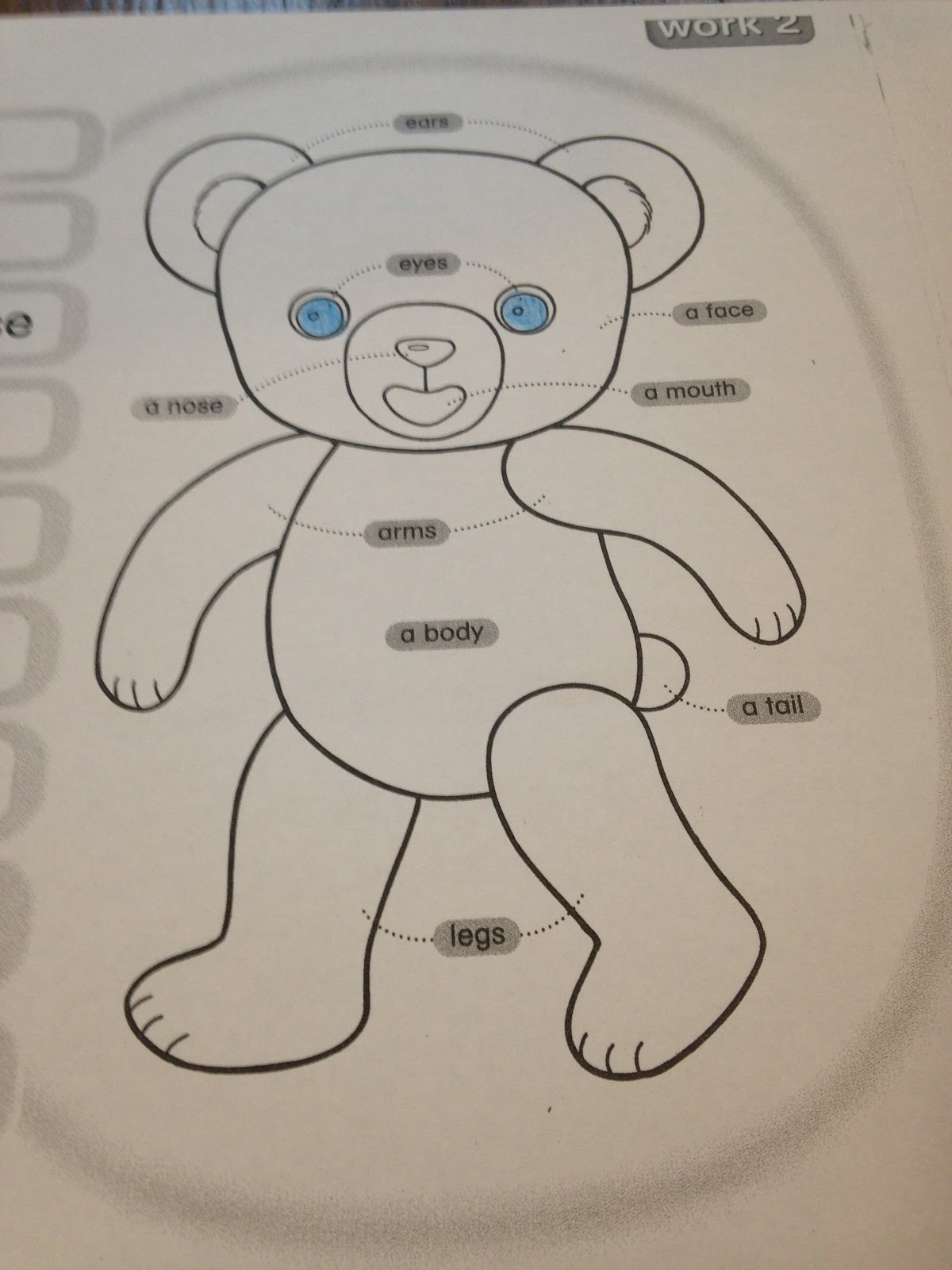
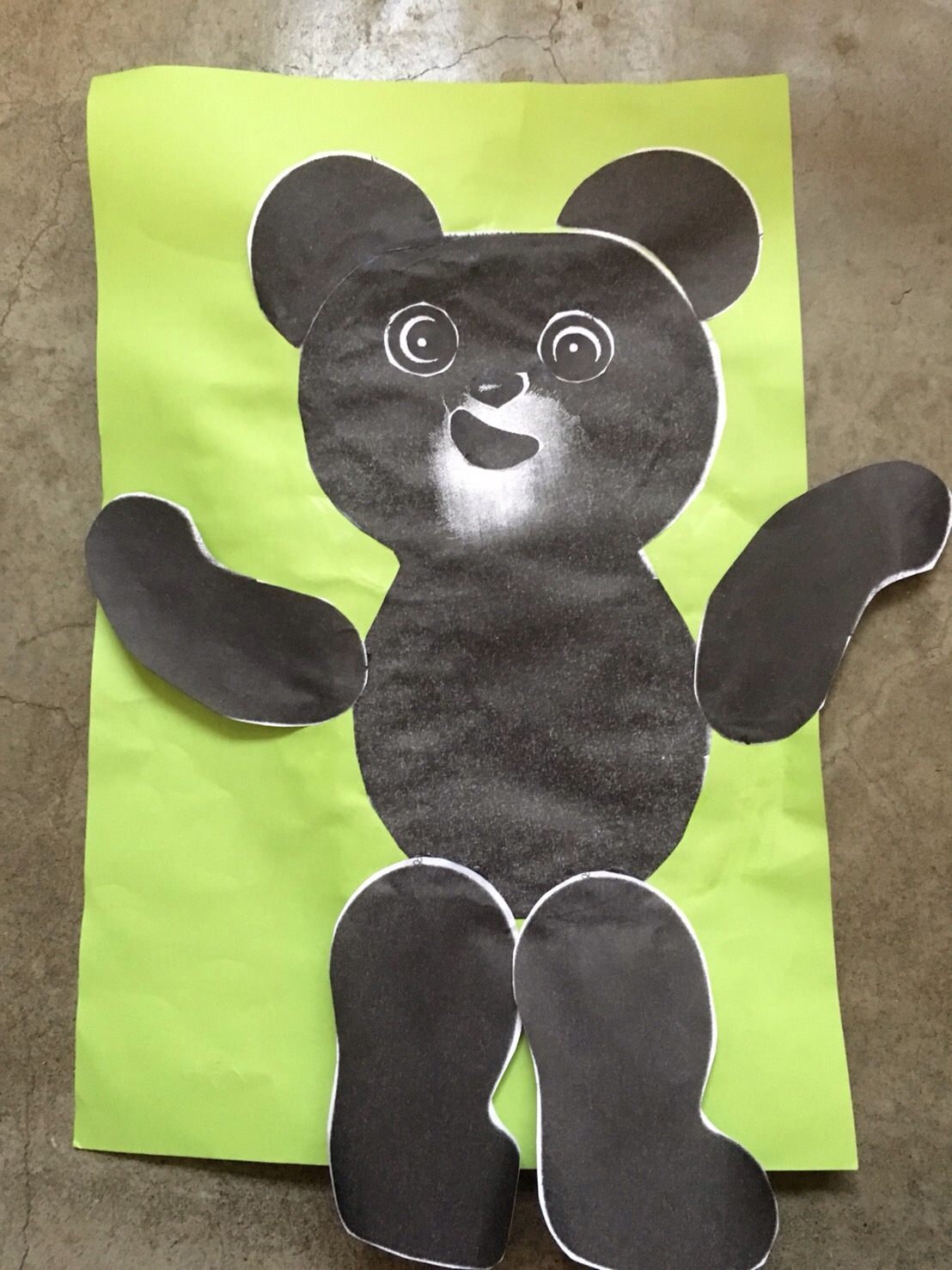
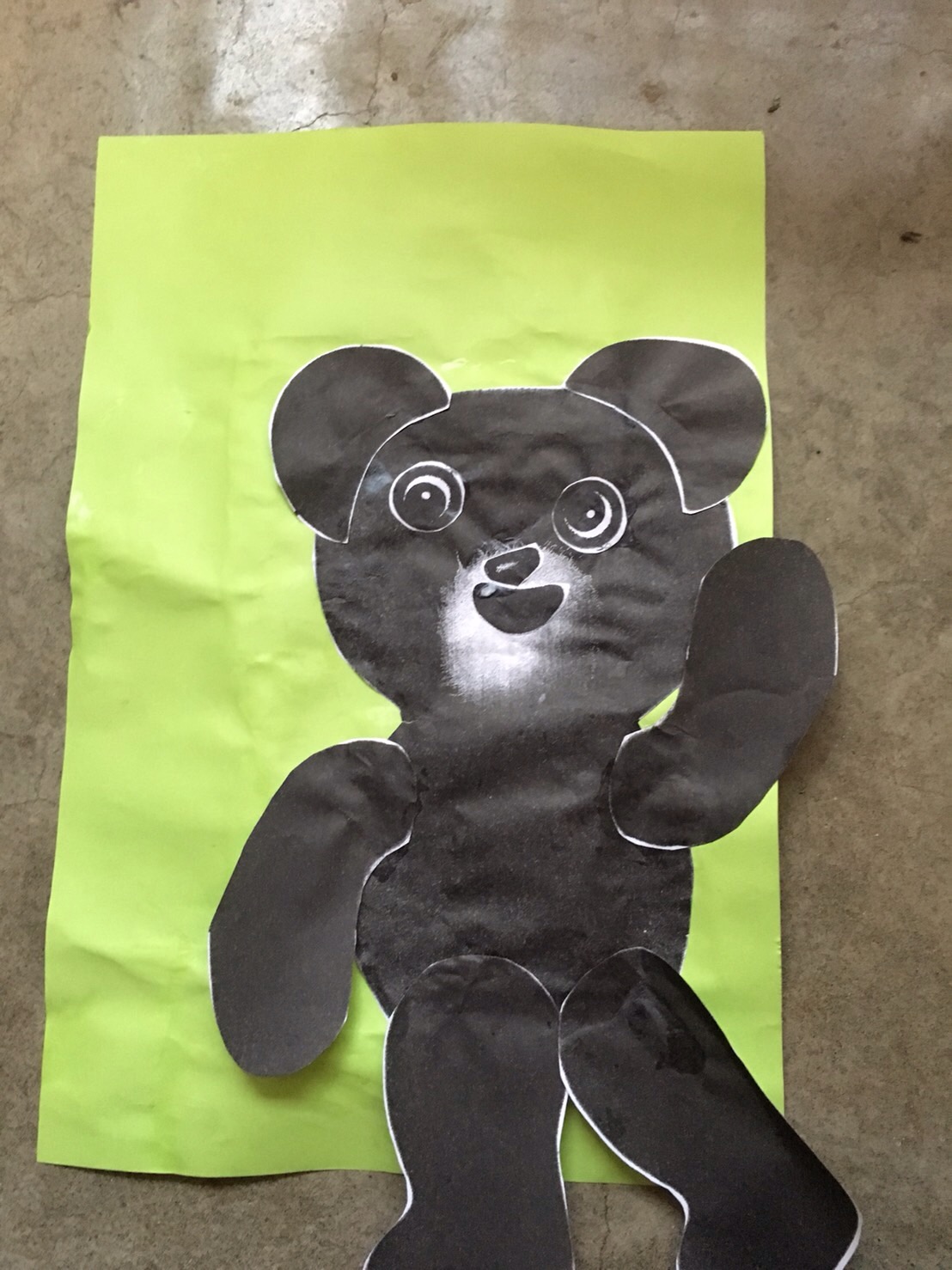
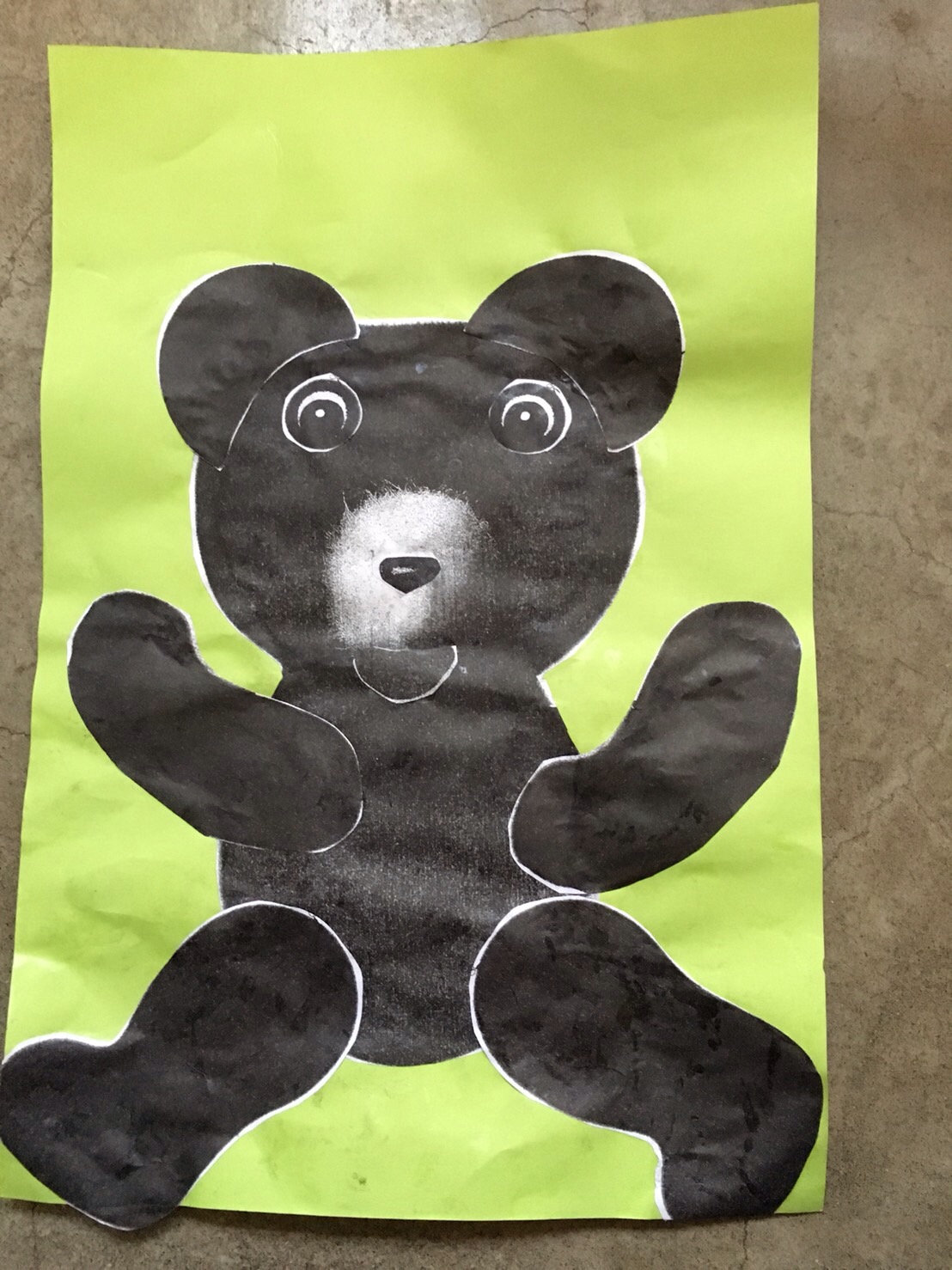
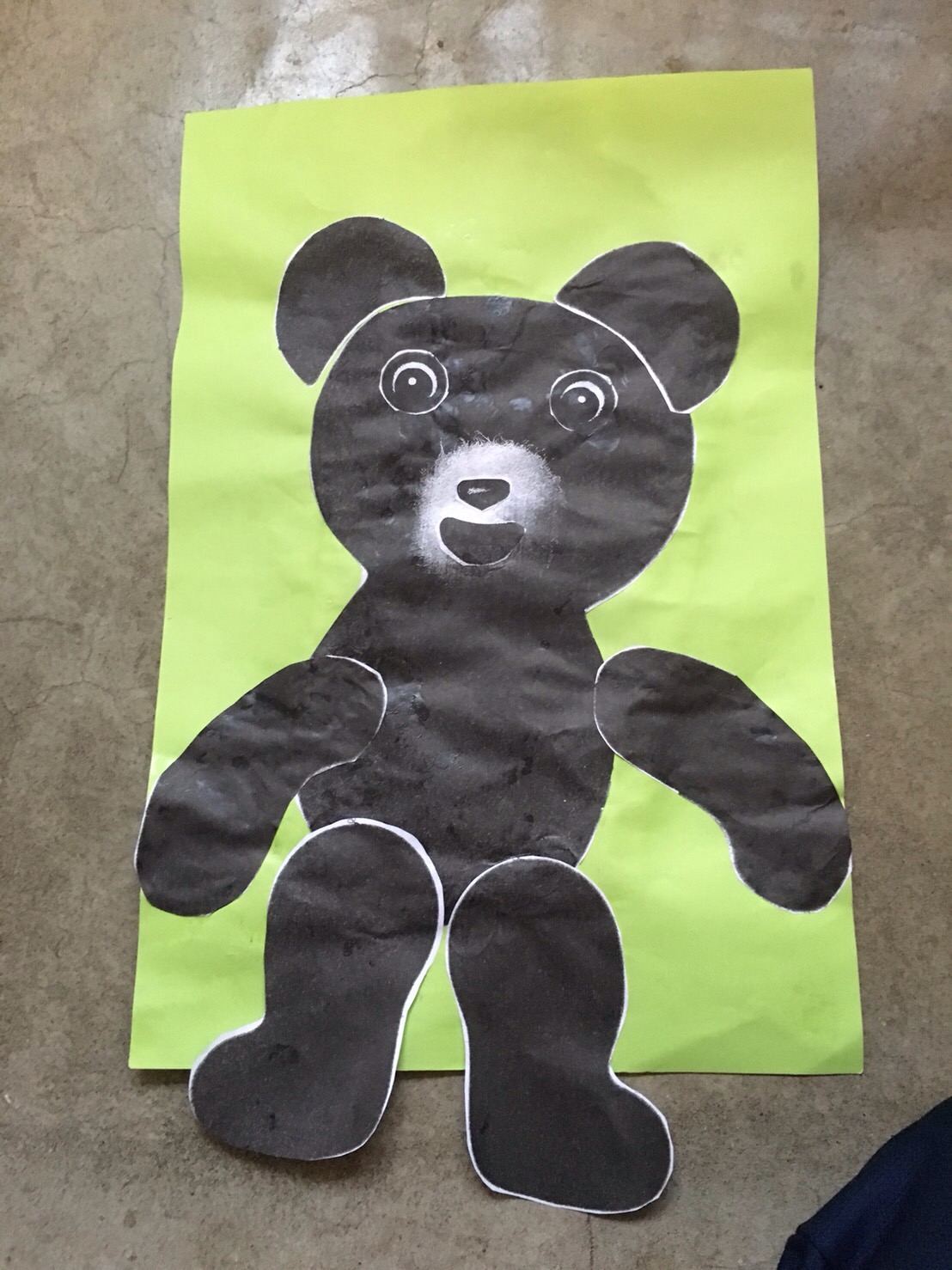
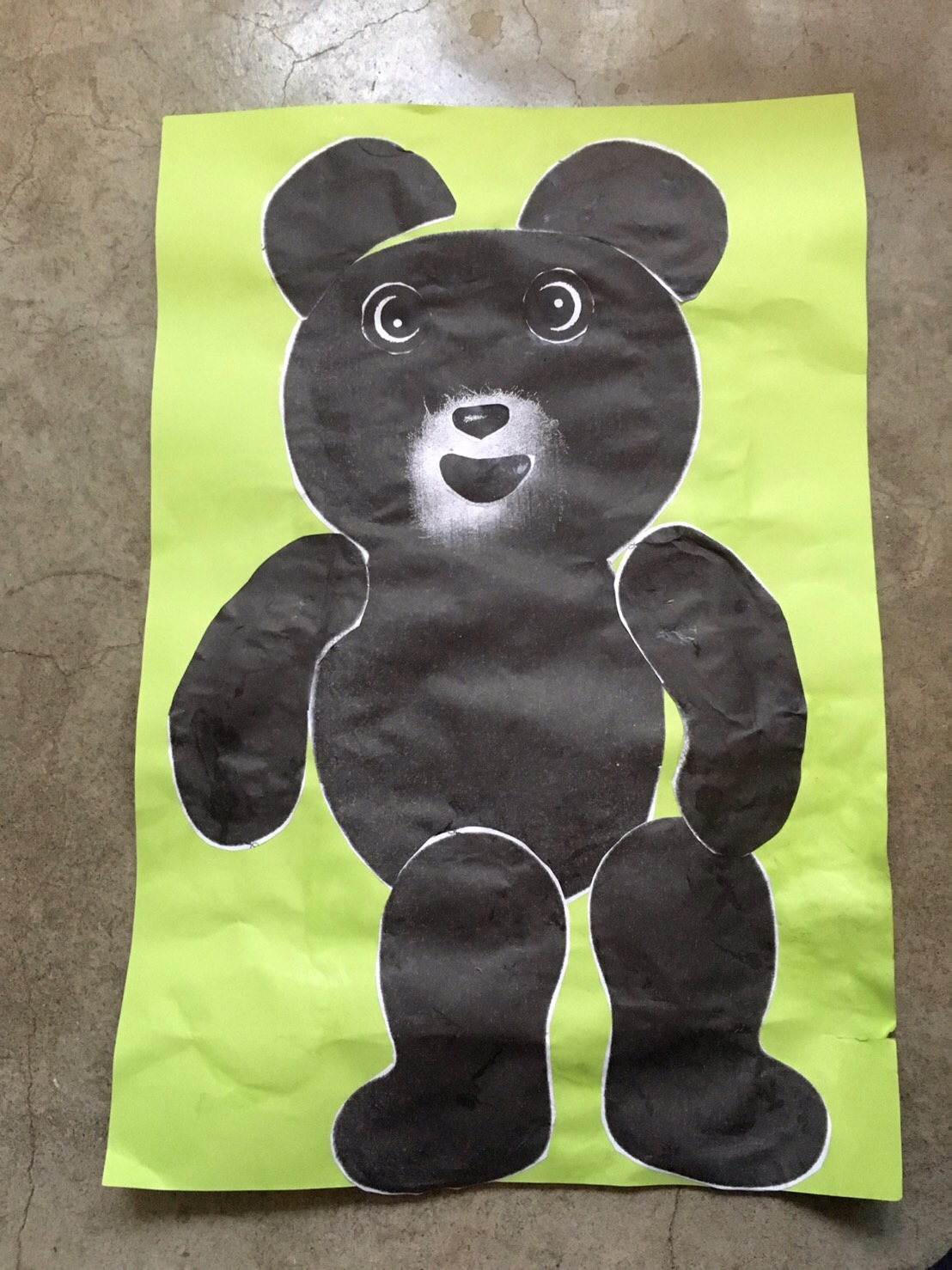
![img_l[1]](https://www.apricot-plaza.co.jp/ap_admin/wp-content/uploads/2016/09/img_l1.jpg)
